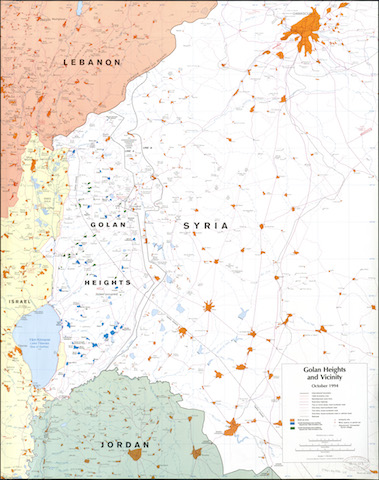Dozens of Syrian Druze demonstrated on Saturday in the Golan Heights against the decision of the United States President Donald Trump to recognise Israeli sovereignty over the occupied region.
 Last week, Trump said that it is the time for American recognition of Israel’s sovereignty over the area, in a move that ended decades of US policy regarding never-ending crises. The US -as well as- the international community used to call the region as the “occupied Golan Heights”.
Last week, Trump said that it is the time for American recognition of Israel’s sovereignty over the area, in a move that ended decades of US policy regarding never-ending crises. The US -as well as- the international community used to call the region as the “occupied Golan Heights”.
Israel occupied the Golan Heights in 1967 following its victory over the Egyptian and Syrian militaries. In 1981, Israel annexed the territory in a move which is not internationally recognised.
The Druze community is divided between three countries: 800,000 people living in Syria, of whom 22,000 in the Golan Heights, Lebanon (450,000), and Israel (120,000).
In November 2018, Israel had run a municipal election for the first time in the area since occupying the Syrian region. The region is very important for Israel as more than one-third of Israel’s water supply comes from the Golan Heights.
The heights offers access to two major water systems: the drainage basin of the Jordan river and its tributaries to the west, and Lake Tiberias and the Yarmuk river to the south.
The heights has over 200 springs and scores of streams, many of which are seized by Israel for its settler use.




